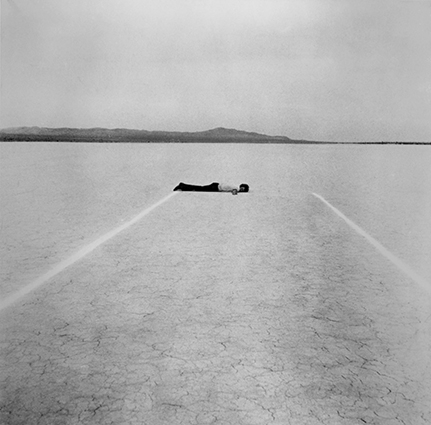
Interview with Paul Cummings is the bilingual edition (French, English) of an interview with Walter De Maria recorded in 1972 for the Archives of American Art.
Interview with Paul Cummings
Walter De Maria
Translated from the English (American) by Cerise Fontaine
Notes translated from the French by Rachel Valinsky
Published with the support of Centre national des arts plastiques (Cnap).
Published in March 2019
Printed in Latvia
700 copies
21,3 × 28,8 cm, 8.39 × 11.34 in, 160 pages
Bilingual edition (French, English)
ISBN: 978-2-918685-11-1
Prix : €30 + shipping costs
Published by Raphaele Godin and Manon Lutanie, for Editions Lutanie
Edited by Cerise Fontaine
Design: Pierre-François Letué
Picture: Walter De Maria
Mile Long Drawing, 1968
Mohave Desert, California
Chalk
Photographer: Unknown
© The Estate of Walter De Maria
Press:
Art Press
-
Walter De Maria was an American artist born in California in 1935. After completing his master’s degree at the University of California, Berkeley, in 1960, he moved to New York City where he produced his first series of sculptures the following year. In 1965 or 1966, he joined the Velvet Underground as a drummer, and also composed his own musical pieces, such as Cricket Music (1963) and Ocean Music (1968). De Maria hesitated to pursue a career in music and finally opted for sculpture. He began to work with metal in 1965 and produced serial numbered sculptures in steel. From 1968 onwards, De Maria became a major figure in Land Art and began to exhibit his work abroad, notably at the Kunstmuseum Basel in 1972. He created Mile Long Drawing (1968), an immense work in the Mojave Desert. In 1977, The Lightning Field was installed in a remote area of the desert in western New Mexico. The work comprises four hundred polished stainless-steel poles designed to attract lightning and was installed on a square one-kilometer grid. De Maria created three permanent installations, The New York Earth Room (1977) and The Broken Kilometer (1979) in New York, and The Vertical Earth Kilometer (1977) in Kassel, Germany. In 1989, he created a sculpture for the main courtyard of the Palais Bourbon to mark the bicentenary of the French Revolution. He died in New York in 2013.